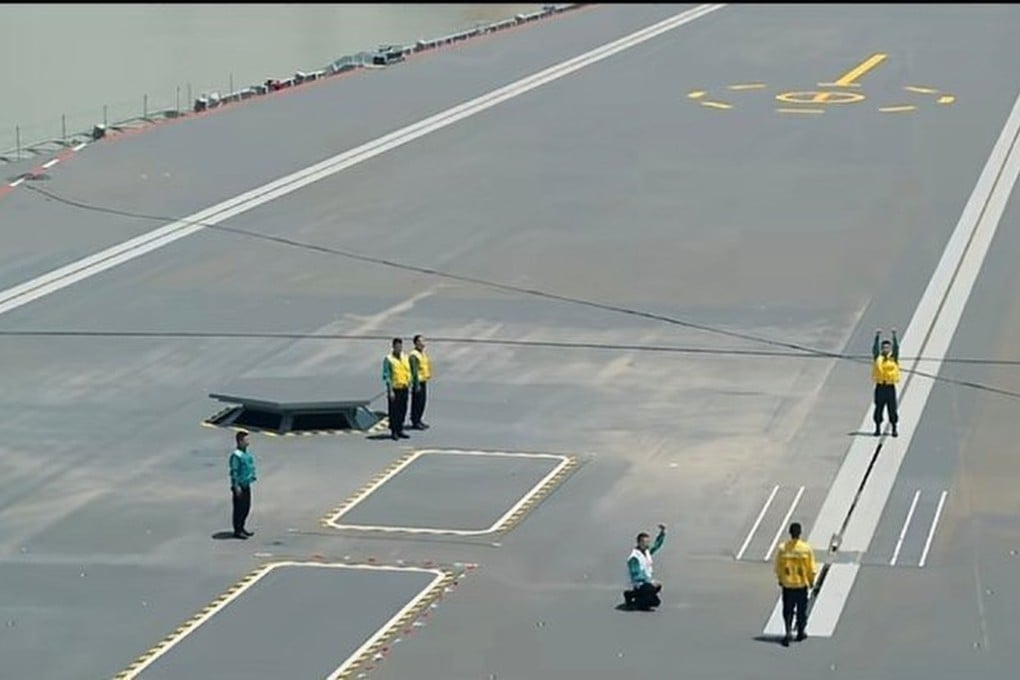Fujian carrier launch tech catapults China’s naval power
Cutting-edge electromagnetic catapults elevate China’s naval might in latest challenge to US sea dominance
By
GABRIEL HONRADA
SEPTEMBER 13, 2024
China’s Fujian aircraft carrier, boasting state-of-the-art electromagnetic catapults, is set to revolutionize the People’s Liberation Army-Navy’s (PLAN) maritime prowess, edging closer to challenging US naval dominance at sea.
This month, The War Zone
reported that China’s PLAN showcased its latest aircraft carrier, the Fujian, with a state-of-the-art catapult system and retractable enclosed control station, also referred to as the “bubble” and reminiscent of those found on US Navy carriers.
The War Zone notes that the footage, released this month, reveals the carrier undergoing its fourth sea trial in Bohai Bay, northeastern China. The Fujian, China’s first Catapult Assisted Take-Off But Arrested Recovery (CATOBAR) carrier, employs electromagnetic catapults, significantly enhancing the PLAN’s operational capabilities, the report said.
The catapult system, highlighted in a promotional video, features three electromagnetic catapults and a control station integrated into the flight deck, mirroring the US Navy’s Ford-class carriers.
The War Zone says that successfully launching aircraft from Fujian will mark a significant milestone for the PLAN, positioning China alongside the US in deploying electromagnetic aircraft launch systems (EMALS).
The Fujian’s EMALS technology marks a critical shift from the limitations of ski-ramp systems, offering greater operational flexibility, efficiency and launch capabilities—though reliability challenges will still underscore the gap between Chinese and US carrier expertise.
In a February 2009
article for The Aeronautical Journal, A Fry and other writers mention that ski-ramp designs for aircraft carriers, while advantageous for short take-off and vertical landing (STOVL) aircraft, present several operational disadvantages.
Fry and others say that the ramp’s ballistic launch profile significantly increases landing gear stress due to the added load as the aircraft ascends the curved incline compared to flat-deck take-offs.
They point out that this design limits the optimal size of the ramp, as increased curvature leads to more significant wear and tear on the aircraft’s landing gear.
They note that the ski-ramp limits the maximum weight of aircraft and their payload capacity that can be launched, especially in extreme environmental conditions like high temperatures and low wind speeds.
Fry and others point out that those disadvantages result in a reduced performance margin, especially compared to catapult-launched systems, which allow aircraft to launch with heavier payloads over shorter distances.
In contrast to ski-ramp designs, Shreyas Maitreya and other writers mention in the 2022
book “Technology Innovation in Mechanical Engineering” that EMALS offers greater efficiency and precision than traditional steam catapults, enabling smoother and more controlled launches.
Maitreya and others note that this system reduces wear and tear on the aircraft and launching equipment, leading to lower maintenance costs and increased aircraft longevity.
They say that EMALS can launch a broader range of aircraft, including lighter unmanned aerial vehicles (UAVs) and heavier manned aircraft. This technology enhances naval forces’ operational flexibility and improves sortie rates by allowing quicker and more frequent launches.
Maitreya and others note that EMALS is more energy-efficient, utilizing electrical power that can be more easily managed and distributed on modern naval vessels.
However, EMALS technology may still have to overcome reliability challenges. A July 2024 US Congressional Research Service (CRS)
report says that, despite engineering upgrades, EMALS reliability aboard the USS Gerald R Ford-class carriers has not significantly improved, with mean cycles between operational mission failures (MCBOMF) remaining consistent with recent developmental tests.
The CRS report says that EMALS’ reliance on off-ship technical support continues to be a significant issue. While it says that efforts to enhance reliability, including software updates and upgraded catapult position sensor blocks, have been made, these have not led to substantial changes.
The source says that although the US Navy is working on further improvements, the system’s current state still poses risks to operational effectiveness and suitability.
Beyond China’s EMALS tech, Kevin Kusumoto mentions in an
article this month for the US Foreign Military Studies Office (FMSO) that the Fujian represents a significant advancement in size and technology compared to China’s previous carriers.
Kusumoto notes that Fujian’s construction highlights China’s increasing capabilities in building and developing domestic carriers, moving away from its past reliance on Soviet designs.
He says that once Fujian completes sea trials and officially joins China’s fleet, it will significantly enhance the PLAN’s capabilities, signaling the start of China’s “three carrier era.”
He says having three carriers enables China to have one carrier in maintenance, another available for training and a third conducting carrier operations in strategically significant maritime regions such as the Taiwan Strait, South China Sea and Indian Ocean.
However, Kusumoto says that the US still maintains a considerable lead over China in carrier application, experience and technology. He says that the US’ operational knowledge of carriers, dating back to World War II, is something China still cannot match.
He asserts that the US Navy has developed a well-established and efficient approach to carrier operations over many years, incorporating it into larger joint and combined arms strategies.
On the other hand, he points out that the PLAN does not have this same extensive historical, practical and combat experience.
Still, despite China’s inexperience in carrier operations, the Fujian will improve China’s technological capabilities and provide crucial operational experience through its extensive sea trials, positioning the PLAN for increased naval influence, Kusumoto argues.
In line with advances in China’s carrier program, Kyle Mizokami notes in a March 2024 Popular Mechanics
article that China is constructing its fourth aircraft carrier, confirmed by Vice Admiral Yuan Huazhi, marking another significant step in China’s naval expansion.
Mizokami states that the fourth carrier may be China’s first nuclear-powered surface ship, a milestone in China’s military technology. He notes that the under-construction vessel is expected to enhance China’s ability to project military power abroad, propelling its wider strategic goals.
He notes that this carrier fleet expansion makes China the second most significant naval force globally, trailing only the US, which has seven carriers in its Pacific Fleet.
The fourth Chinese carrier’s nuclear propulsion would offer virtually limitless range, a crucial benefit for extended missions, he says. Mizokami notes that China’s carrier fleet expansion reflects its ambition to eventually match US naval capabilities with a fleet of nuclear-powered carriers that allows for a continuous at-sea presence.
China’s Fujian aircraft carrier, boasting state-of-the-art electromagnetic catapults, is set to revolutionize the People’s Liberation Army-Navy’s (PLAN)

asiatimes.com









